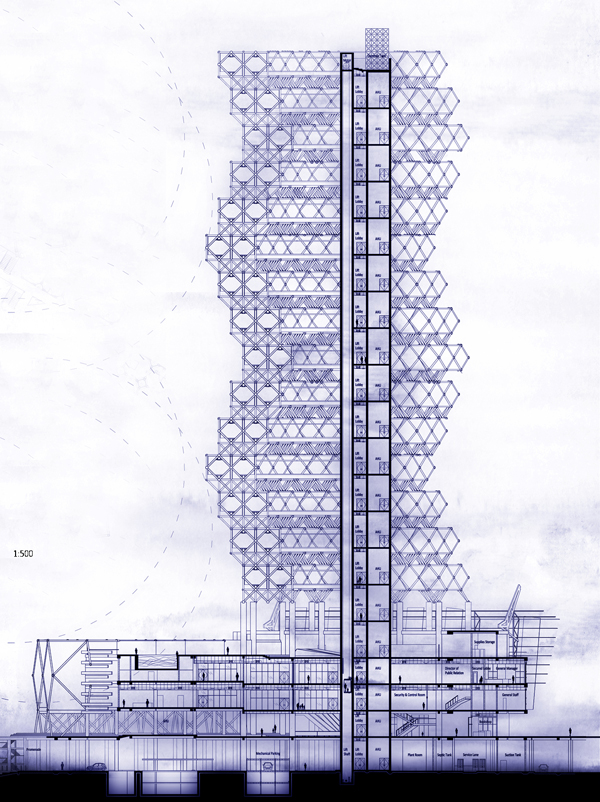A honeycomb of separate but unified residences rising high in the skies of Johor Bahru, Malaysia can help house the influx of new residents moving to the area in coming years, say Atta Irdrawani Zaini and Ungku Norani Sonet, architecture students in Sarawak, Malaysia.
The two have designed a skyscraper to help hold the area’s new population, which is expected to nearly double from its 2005 numbers by the year 2025, according to the area’s growth management plan. Zaini and Sonet note in their “Dense.City” entry to eVolo’s skyscrapers competition, interestingly, that Johor Bahru is already a “high-rise jungle,’ and that many area skyscrapers have been abandoned mid-construction due to lack of demand. Though they argue that skyscrapers should only be built when density deems necessary, their building will be fully utilized as the population grows, they believe. High-density structures such as their own have the added benefit, they say, of forging a sense of community amongst residents.
The “Dense.City” building has been designed using a “bottom up” thought process, say the designers, and in an arbitrary way that allows for a style of architecture they dub as “formless.” The building is highly modern, a wall of repeating polygonal pods, but is made interesting visually and in terms of design by the random way in which the units are stuck together. The condos cluster in two wave-like walls that attach to the wide front of a tall, rectangular main lobby and elevator area. As people fill the residences in the skyscraper “jungle” of Johor Bahru, “Dense.City” will undoubtedly be one of the most unique trees in the forest.



















